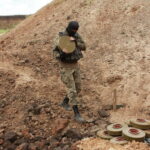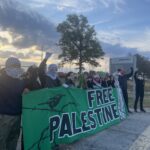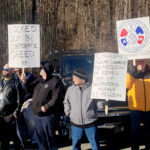Last month, a hoax circulated online that people wearing shoes indoors led to a spike in coronavirus cases in Italy. Worldwide, rapidly spreading misinformation and disinformation about COVID-19 is negatively affecting people’s behaviors towards the virus. Action must be taken to curb the spread of false information on a global stage, and the Peace Corps has the capacity to do it.
Media literacy, or the ability to critically evaluate media, is an integral tool that can be used to combat false information online. Despite the need for this skill to discern COVID-19 misinformation and disinformation, there is no formal program geared toward teaching digital skills and media literacy internationally. We need to implement a program to stymie the spread of general misinformation and provide intellectual tools to help discern what is real and what is fake in order to protect public health, trust, and safety.
The Peace Corps could develop a media literacy program aimed at combating misinformation in the post-pandemic world, and is well-positioned to educate about this much-needed skillset. From WhatsApp to Twitter, the proliferation of false coronavirus-related information highlights how susceptible people are to misleading information online.
It is imperative to plan for what the world after coronavirus should look like. Equipping youth abroad with the intellectual toolbox to assess misinformation should be a critical component.
And this threat is even greater in developing countries, where institutions are more fragile and access to data can be prohibitively expensive. In India, people were urged to avoid fried and spicy food as a home remedy to tackle the virus. Bot farms in Latin America proliferated fabricated videos about the virus that were intended to destabilize democratically-elected governments in the region. In Iran, hundreds of people died of methanol poisoning under the mistaken assumption that it protects against the coronavirus. People need a guard against the spread of such potentially lethal inaccuracies.
While currently there is no international program to teach media literacy, the groundwork exists. Other organizations such as First Draft and Common Sense Education have successfully rolled out media literacy programs in the US and the UK, with resources available in major languages like Spanish, German, and French. However, the Peace Corps has a pre-existing international presence and has had the mandate to build local capacity in developing nations since the 1960s. Therefore, the Peace Corps could more effectively implement these practices, translate materials into additional languages, and account for countries’ technical limitations.
Taking the lead on misinformation falls in line with the Peace Corps’ first goal: to help the people of interested countries in meeting their need for trained men and women. As a critical 21st-century skill that all connected individuals require, media literacy falls into this category.
Furthermore, the Peace Corps already has the necessary infrastructure to implement media literacy programs in the countries where it operates. Through pre-service, inter-service, and mid-service trainings as well as project design and management workshops, the Peace Corps provides ample preparation to volunteers to teach specific content in their host communities. Volunteers fill the role of educators and undergo training on how to deliver specific instruction at a local level. They also often learn to speak the regional dialects of their host country and can assist in the explanation of why misinformation is a problem.



